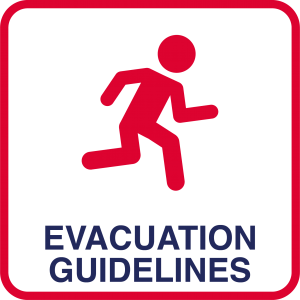Your ability to get out of your home during a fire depends on advance warning from smoke alarms and advance planning.
Plan Ahead! If a fire breaks out in your home, you may have only a few minutes to get out safely once the smoke alarm sounds. Everyone needs to know what to do and where to go if there is a fire.
- Draw a map of your home. Show all doors and windows. Download a grid here.
- Visit each room. Find two ways out.
- All windows and doors should open easily. You should be able to use them to get outside.
- Make sure your home has smoke alarms. Install smoke alarms in every sleeping room, outside each sleeping area and on every level of the home. Push the test button to make sure each alarm is working.
- Choose a meeting place outside in front of your home. This is where everyone can meet once they’ve escaped and where firefighters can see you and know you are out.
- Make sure your house or building number can be seen from the street.
- Talk about your plan with everyone in your home.
- Close doors behind you as you escape. This may slow the spread of smoke, heat and fire.
- Practice your home fire drill twice a year at night and during the day with everyone in your home. Practice using different ways out and teach children how to escape on their own in case an adult can’t help them.
For more detailed information on creating a home fire escape plan, please visit https://www.nfpa.org/public-education/by-topic/safety-in-the-home/escape-planning.



